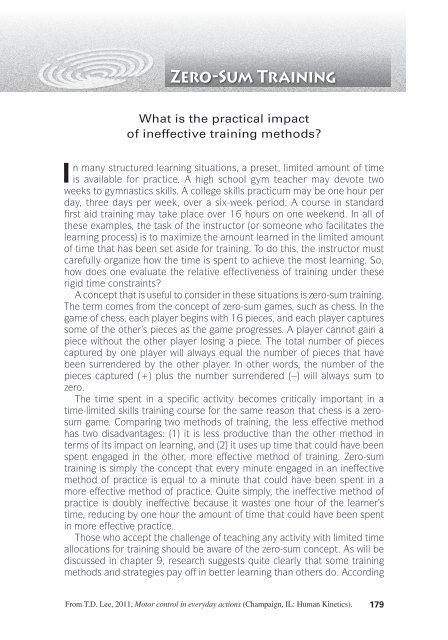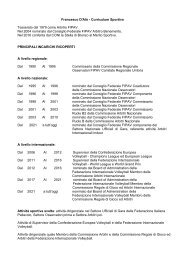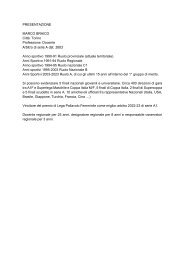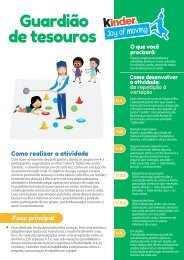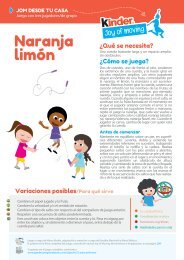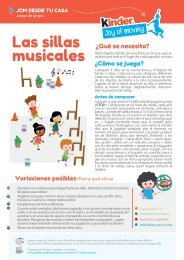Zero-Sum Training
You also want an ePaper? Increase the reach of your titles
YUMPU automatically turns print PDFs into web optimized ePapers that Google loves.
<strong>Zero</strong>-<strong>Sum</strong> <strong>Training</strong><br />
What is the practical impact<br />
of ineffective training methods?<br />
I<br />
n many structured learning situations, a preset, limited amount of time<br />
is available for practice. A high school gym teacher may devote two<br />
weeks to gymnastics skills. A college skills practicum may be one hour per<br />
day, three days per week, over a six-week period. A course in standard<br />
first aid training may take place over 16 hours on one weekend. In all of<br />
these examples, the task of the instructor (or someone who facilitates the<br />
learning process) is to maximize the amount learned in the limited amount<br />
of time that has been set aside for training. To do this, the instructor must<br />
carefully organize how the time is spent to achieve the most learning. So,<br />
how does one evaluate the relative effectiveness of training under these<br />
rigid time constraints?<br />
A concept that is useful to consider in these situations is zero-sum training.<br />
The term comes from the concept of zero-sum games, such as chess. In the<br />
game of chess, each player begins with 16 pieces, and each player captures<br />
some of the other’s pieces as the game progresses. A player cannot gain a<br />
piece without the other player losing a piece. The total number of pieces<br />
captured by one player will always equal the number of pieces that have<br />
been surrendered by the other player. In other words, the number of the<br />
pieces captured (+) plus the number surrendered (–) will always sum to<br />
zero.<br />
The time spent in a specific activity becomes critically important in a<br />
time-limited skills training course for the same reason that chess is a zerosum<br />
game. Comparing two methods of training, the less effective method<br />
has two disadvantages: (1) it is less productive than the other method in<br />
terms of its impact on learning, and (2) it uses up time that could have been<br />
spent engaged in the other, more effective method of training. <strong>Zero</strong>-sum<br />
training is simply the concept that every minute engaged in an ineffective<br />
method of practice is equal to a minute that could have been spent in a<br />
more effective method of practice. Quite simply, the ineffective method of<br />
practice is doubly ineffective because it wastes one hour of the learner’s<br />
time, reducing by one hour the amount of time that could have been spent<br />
in more effective practice.<br />
Those who accept the challenge of teaching any activity with limited time<br />
allocations for training should be aware of the zero-sum concept. As will be<br />
discussed in chapter 9, research suggests quite clearly that some training<br />
methods and strategies pay off in better learning than others do. According<br />
From T.D. Lee, 2011, Motor control in everyday actions (Champaign, IL: Human Kinetics).<br />
179
180 Motor Control in Everyday Actions<br />
to the zero-sum concept, then, it is doubly important that facilitators<br />
ensure that their practice methods and techniques are as theoretically and<br />
practically sound as possible to establish an effective learning environment.<br />
Self-Directed Learning Activities<br />
1. Explain the zero-sum training concept in your own words.<br />
2. Explain why the zero-sum training concept is most appropriate for<br />
situations in which practice time is limited.<br />
3. Why does the zero-sum training concept not apply to someone who<br />
has unlimited time to devote to training?<br />
Suggested Readings<br />
Schmidt, R.A., & Lee, T.D. (2011). Motor learning concepts and research<br />
methods. In Motor control and learning: A behavioral emphasis (5th<br />
ed., pp. 327-346). Champaign, IL: Human Kinetics.<br />
<strong>Zero</strong> sum. (2010, October 5). In Wikipedia. Retrieved from http://<br />
en.wikipedia.org/wiki/zero-sum.<br />
From T.D. Lee, 2011, Motor control in everyday actions (Champaign, IL: Human Kinetics).


